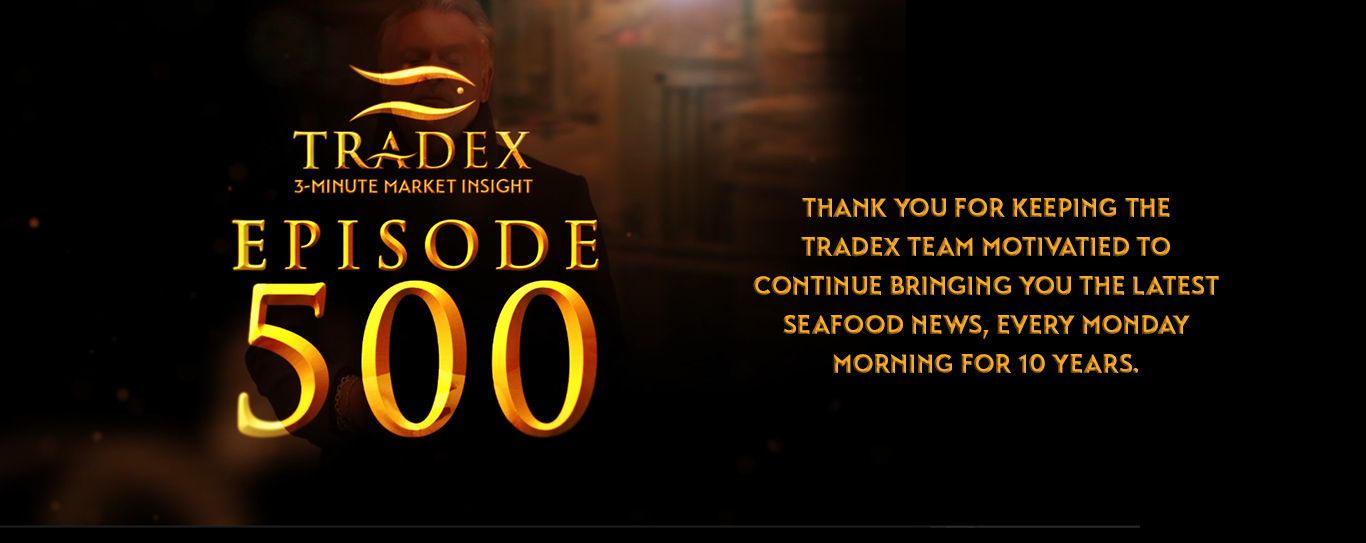
Loading
EP 500 | AIRED 08/10/2020
Pebble Mine : What Could Actually Happen to Alaska's Sustainable Salmon
August 10, 2020 This week we update you with facts directly from the source on how the Pebble Mine could affect Alaskan Salmon.
--- If you've followed the headlines surrounding the Pebble Mine recently, it's evident that what should be a science-based environmental debate, has been turned into an epicenter for political controversy.
--- We spoke to experts on the ground in Alaska to bring you the precise scientific facts regarding the extent of damage to the ecosystem this mine could incur.
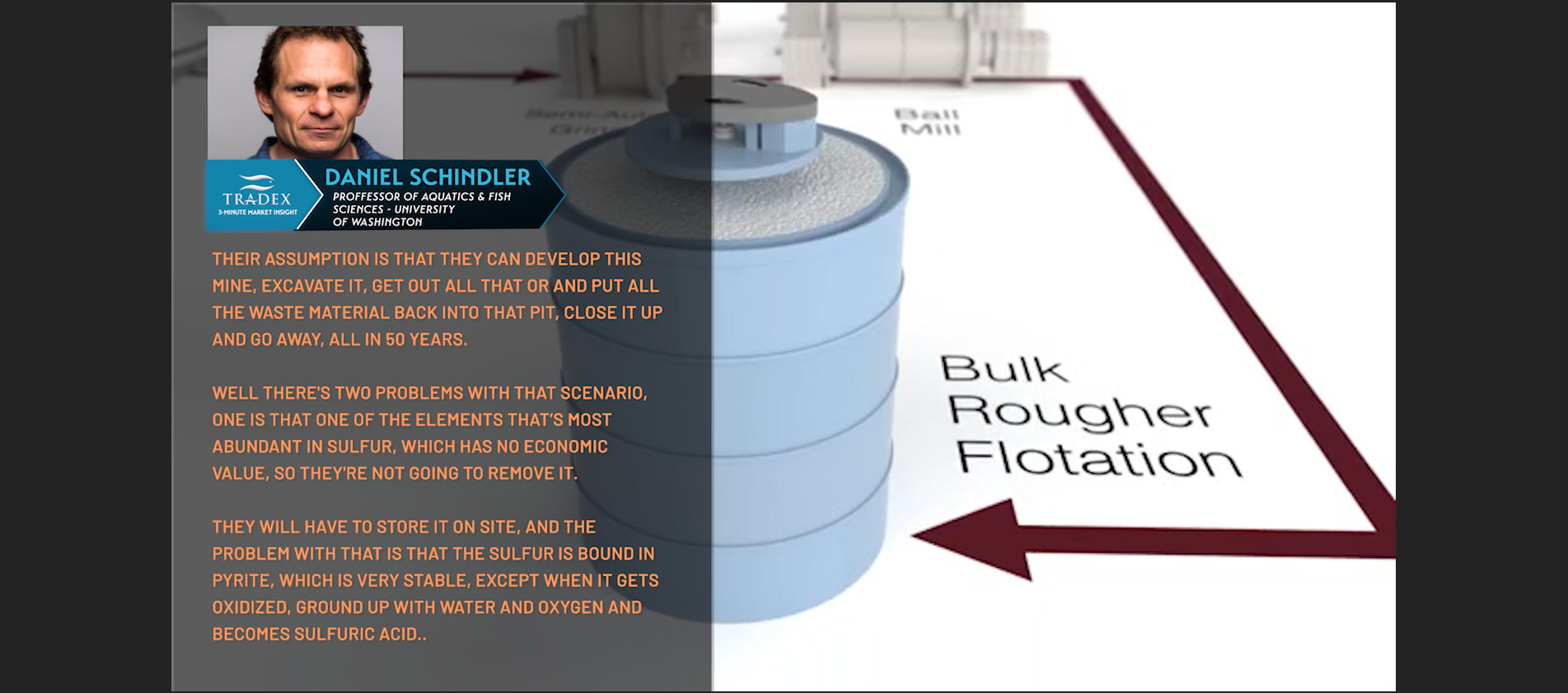
For a brief introduction, the Pebble group are currently offering the shorter version of their project, a 20 year mine - in order to gain the necessary environmental permits.
This would only remove 15% of the deposit, and includes constructing immense infrastructure in order to access these metals, which includes roads, installation of hydro lines and a perpetual water treatment plant for the oxidized sulfuric materials that will also need to be excavated.
However, when speaking to potential investors they are pitching the full 70-80 year mine in order to access the half-a-trillion dollar deposit.
With this new infrastructure, it will create a gateway for mines of the numerous untouched deposits all over the Alaskan tundra.
The Pebble Mine project not only poses an immediate threat to the Nushagak and Kvichak rivers, some of the largest Salmon supplying rivers in the world, but to the future of Sustainable Wild Salmon.
--- First we spoke to Aquatic and fishery sciences Proffessor Daniel Schindler, from the University of Washington, who explains the exact ramifications this project would have on the Bristol Bay habitat:
"Their assumption is that they can develop this mine, excavate it, get out all that or and put all the waste material back into that pit, close it up and go away, all in 50 years.
Well there's two problems with that scenario, one is that one of the elements that’s most abundant in sulfur, which has no economic value, so they're not going to remove it.
They will have to store it on site, and the problem with that is that the sulfur is bound in pyrite, which is very stable, except when it gets oxidized, ground up with water and oxygen and becomes sulfuric acid.
And then you have a risk of both the sulfuric acid reducing the PH, making it more acidic, and making the residual metals more soluble.
And then you get a form of 'toxic soup', which sounds dramatic but is a reality.
when you store these sulfur-baring waste-rocks you produce acids that are basically battery acids with metal mixed into them.
That stuff doesn't go away, it doesn't disappear, it doesn't volatilize, the only way it will go away is by leaking out into the surrounding landscape."
--- The reason Bristol Bay is such a productive place for Salmon, is because it's a wet place, that was heavily glaciated during the last major glaciation.
And what that did is left all the gravels, which helps water flow everywhere, which makes it a perfect place for fish, but also makes it a perfect storm to mess it up via storing contaminants on the land forever, it's just not possible.
Ground water moves all over the place, and sometimes it's hard to fathom how big this pit is going to be.
The bottom of this pit is going to be thousands of feet below sea level.
Their assumptions are that time stands still, mainly that they don’t need to worry about this beyond 50 years, and that gravity doesn't operate in Bristol Bay.
And of course gravity is what moves water downhill, and with all that water comes all those contaminants, that the water is going to get loaded up with." - Daniel Schindler
--- Schindler explains that what makes the Bristol Bay fisheries so sustainable is the hugely diverse 'portfolio effect' of the water beds.
The land has a huge variability in numbers of fish, and when one area is a bust, another will boom to compensate.
Unfortunately when you start wiping out a part of this habitat, that sustainability can quickly to erode and fall apart.
"Bristol Bay, in terms of dollars and cents, depending on where you look, are worth between half a billion and one and a half billion dollars every year.
And when you see how much money is put into keeping the system going, it's only a couple million bucks.
So if you want to talk on a return on your investment, leaving it alone is one of the best things we can do, from a purely economic standpoint. " - Daniel Schindler
--- Next, we spoke with Bristol Bay Regional Seafood Development Association's Executive Director Andy Wink, who created an independent study to compensate for much of the Army Corps of Engineers oversight, to get the fishery's perspective on the potential risks involved not only with the mine site, but the transportation corridor itself.
--- "The way that the tailings damns are oriented right now, they would drain out into the Mulchatna and the Nushagak river.
The Nushagak river is the largest Sockeye producing rivers in the world.
We could expect to see less productivity from this river system.
Any time you're talking about crossing anadromous streams, there's risks to affect those runs, and the transportation corridor crosses multiple streams.
This or pipeline, we haven’t seen a lot of background information on that, and it's stability, if there was a rupture there it would cause even more destruction.
When you’re talking about trucks, the copper dust from the trucks, it doesn’t take a lot of copper in the water to affect the salmon's ability to smell and evade predators.
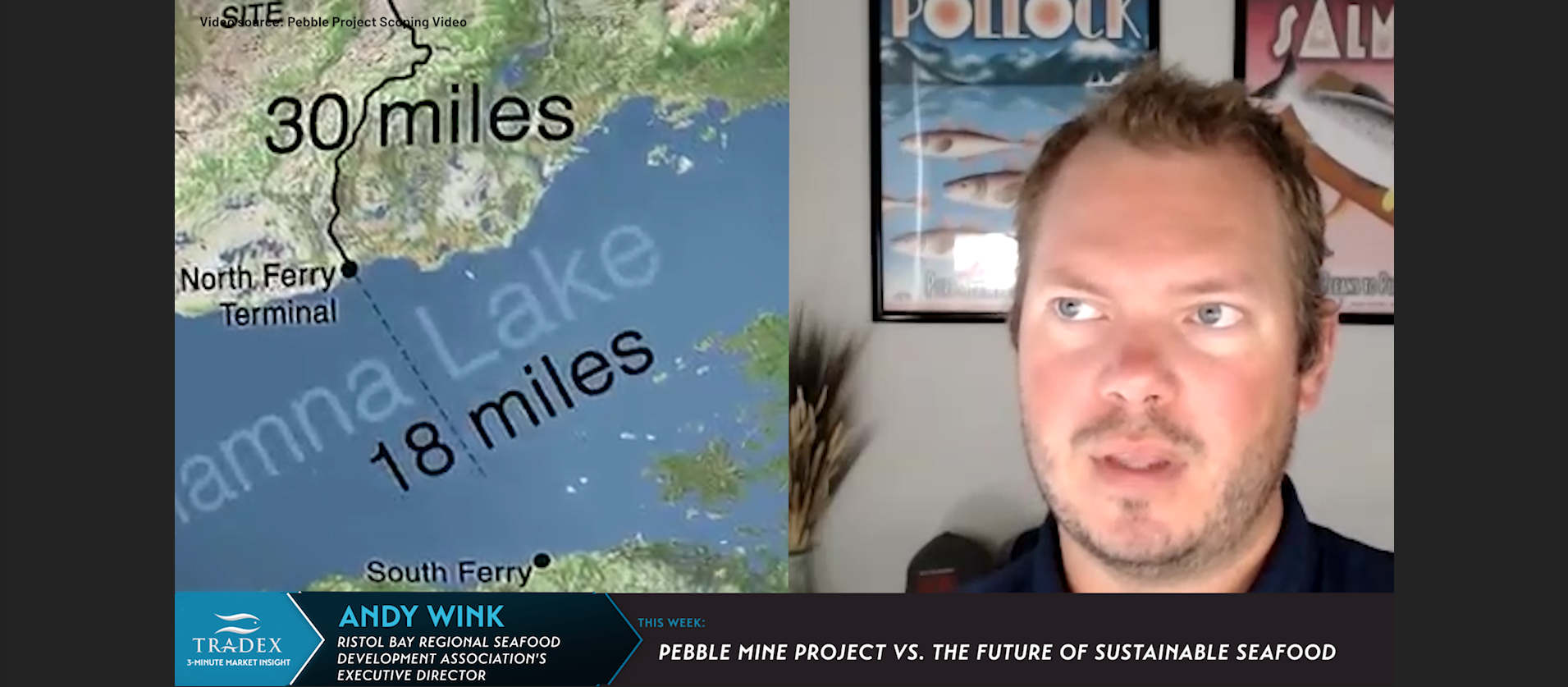
There have been quite a few studies on how to prevalence of copper in rivers affects salmon, and if you're spreading that dust along creeks and rivers, that could be another thing that would affect salmon survivability and productivity.
So I think there's a lot of risk, not only in the mine area itself, but also along that transportation corridor, to get that mined or out.
And they found a pretty direct correlation with the bigger the facility is, the more material comes out in a breach.
Because of the size of this, even in the small mine scenario tailings dam, which isn't even economically feasible, it's about 10 times as large as Mount Polley.
It's pretty catastrophic, at Mount Poly, there was a very deep lake downstream, that caught most of the toxic material from the breach, but that's not the case in this area.
The supply chain is pretty big, this fishery is massive, it's the most valuable wild salmon fishery in the world.
Our Salmon goes all over the world, and all over the States, so this affects businesses all over the world and the US.
Those in the supply chain should let their members of congress know, that this permitting process has not been up to par.
Senator Murkowski has said numerous times that it has to meet a high bar, and she's not seeing that.
I think other senators and representatives from other states need to join in and give support to some oversight here, as it's pretty clear to us that the rules of NEPA and the permitting requirements around environmental safeguards, are not being looked at deep enough for such an important project.
When federal agencies don't do their job, it's congresses' job to step in and make sure that they are following the rules, and serving the American public." - Andy Wink
--- It is no secret that this project comes with a fiery backlash from those who seek to protect these lands, including joined efforts on behalf of commercial and sport fisheries as well as tribal communities, all of which usually struggle to come to an agreement on resources.
We spoke to Daniel Cheyette, VP of Lands and Resources for the Bristol Bay Native Corporation, a for-profit organisation who's shareholders are the Native People of Bristol Bay, which has been publicly opposed to the project since 2009 to take a closer look at the social-economic effects this would have on the surrounding communities.
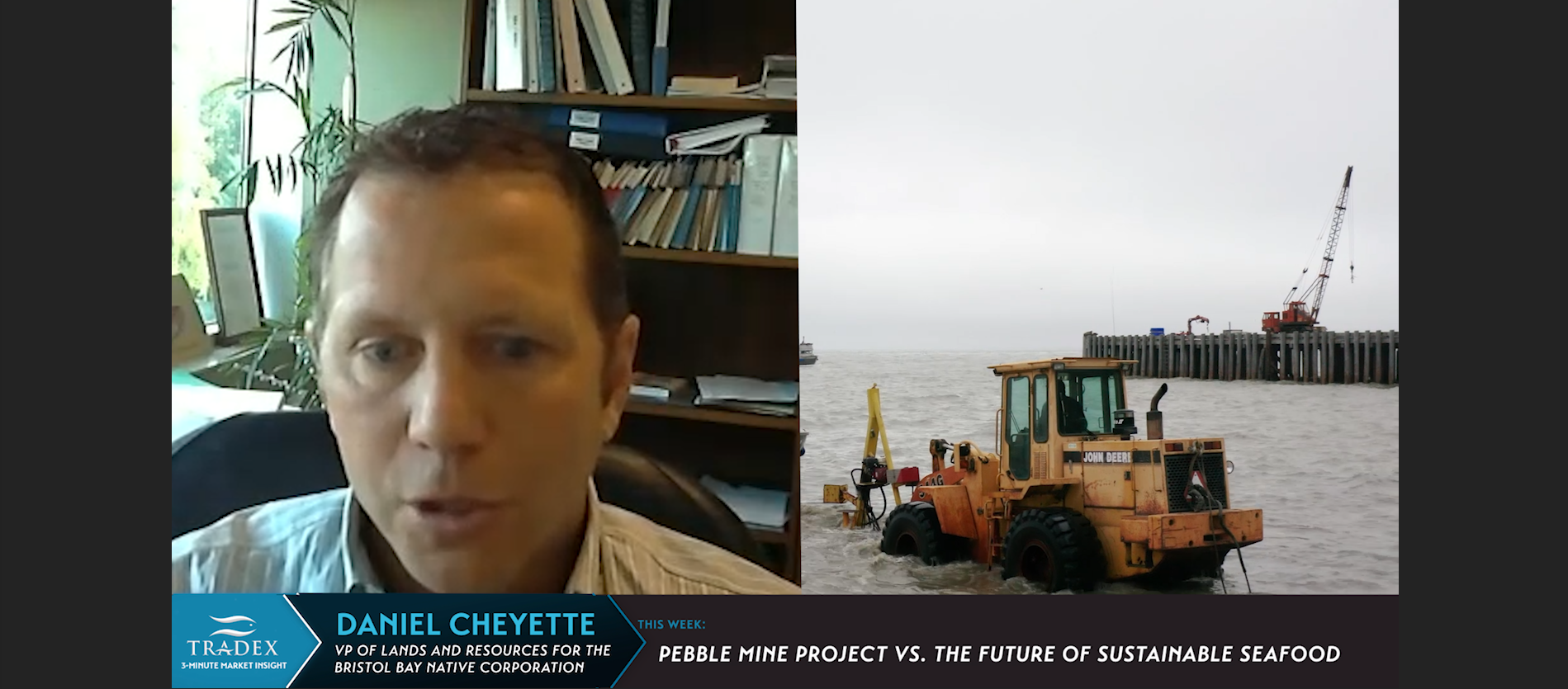
-- " There are a whole host of reasons why this is moving very fast, and none of them are good reasons,
The loser in all of this are the people of Bristol Bay and the Salmon Fishery.
The United States & Canadian Governments have spent billions of dollars trying to resurrect once abundant and flourishing salmon streams and habitats to very little effect.
And here we have one of the most abundant wild Sockeye salmon fishery that still exists and thrives, and here we are charging forward to destroy it.
If it wipes out the Salmon Fisheries, the substistence lifestyle that's been going on for thousands of years, potentially could be gone, heavily changed or damaged.
The commercial fishery of 140 years is definitely at risk, it is the economic backbone of this community, i don't think there is one family who doesn't have some sort of connection to the fishery.
One of the strengths of this fishery is it's reputation and brand, its a high quality product that comes from pristine waters.
Even if nothing goes wrong, the fact that you've got a huge open pit mine at the headwaters is going to damage that brand.
The tundra where this project would be built, is essentially a sponge.
There is no barrier between surface and ground waters.
This is just the wrong place to have a potentially contaminating, water-dependant enterprise." - Daniel Cheyette
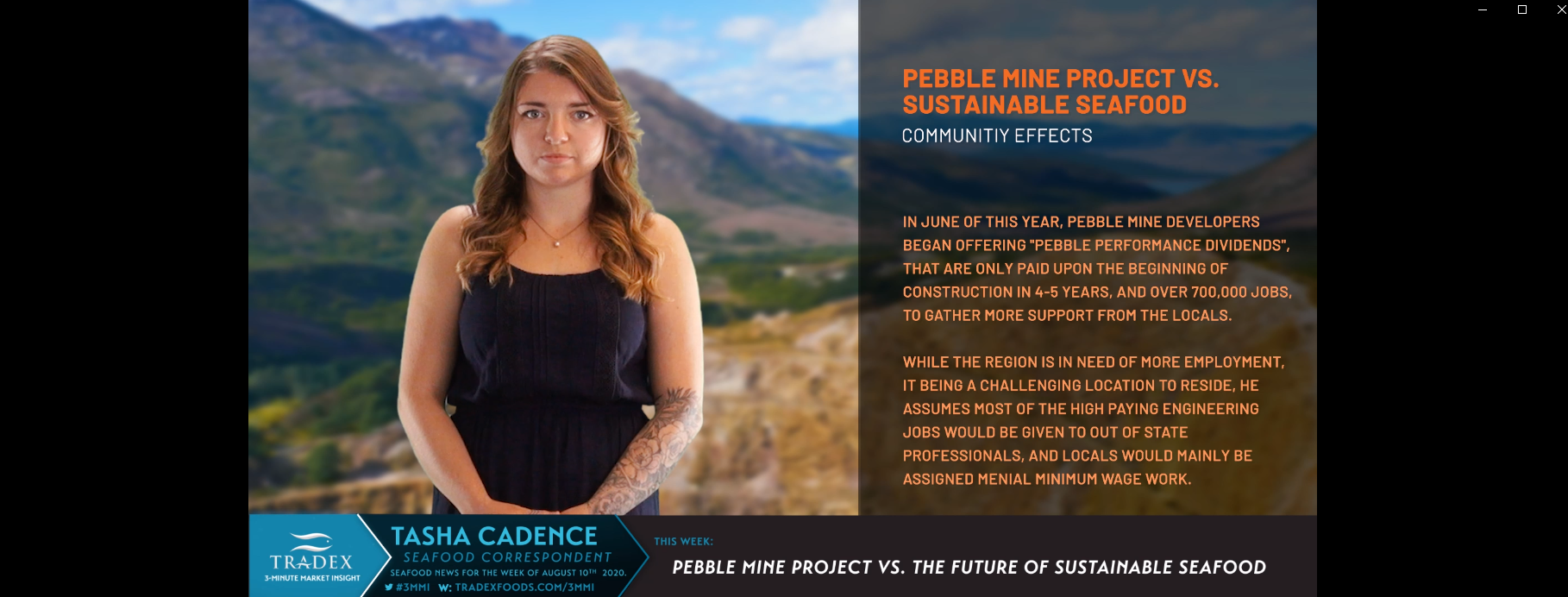
--- In June of this year, Pebble Mine Developers began offering "Pebble Performance Dividends", that are only paid upon the beginning of construction in 4-5 years, and over 8000 jobs, to gather more support from the locals.
While the region is in need of more employment, it being a challenging location to reside, he assumes most of the high paying engineering jobs would be given to out of state professionals, and locals would mainly be assigned menial minimum wage work.
These are not jobs, says Cheyette, worth destroying local ecosystem that has supplied the communities with over 140 years of employment and thousands of years of substistence living.
--- Pebble Mine's footprint is much larger than one mine, and one fishery.
These decisions shift our priorities away from our sustainable and wild seafood resources.
This infrastructure creates a 'gateway' to all the other mineral deposits in the area, putting the entire area at risk to what could be the beginning of the end to one of the most productive and sustainable Wild Salmon Fisheries in the world.
If you are interested in how you can help, we've left some links below to resources and information:
Save Bristol Bay
Pebble Watch
Business For Bristol Bay
BBC : Pebble Mine



